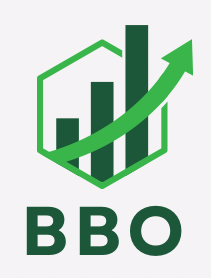
Affiliate marketing is like being a middleman who connects potential buyers with the products or services they need. You promote products, and when someone makes a purchase using your referral link, you get a commission. Pretty straightforward, right? But let’s get into the nitty-gritty of how this all works.
So, there are a few key players in the game. You’ve got the merchant or product creator (the folks who actually make the stuff), the affiliate or marketer (that’s you!), and the consumer (the buyer). The merchant provides the product and the affiliate promotes it to potential buyers. If the promotion leads to a sale, the affiliate earns a commission. Simple, but powerful.
Why jump into affiliate marketing? Well, there’s a bunch of perks. For one, you don’t need to create a product yourself. Got a blog or social media following? You can monetize those platforms by promoting products you believe in. Plus, it’s got a pretty low barrier to entry. No huge investment needed, just your time and effort.
But, like any business, it’s not all smooth sailing. Some folks think it’s a get-rich-quick scheme, but it’s not. It takes time to build trust with your audience and find the right products to promote. And, there’s a bit of competition out there. With patience, persistence, and a bit of savvy, though, you can carve out your own successful corner in the affiliate marketing world.
Finding Profitable Niches: The Foundation of a Successful Affiliate Business
Choosing the right niche in affiliate marketing is where a lot of your success is determined. It all starts with research. Understanding your market thoroughly is like having a roadmap; it guides you in the right direction. One way to do this is by diving into forums, social media groups, and industry news sites. Look for what people are talking about, their pain points, and their interests.
Analyzing trends is a goldmine. Google Trends can show you what’s hot and what’s not. Seasonal trends might also impact your niche – think about how interest spikes in fitness products around New Year when everyone’s making resolutions, or gardening tools come spring.
Evaluating a niche’s profitability is crucial. Consider the competition – niches with too much competition can be hard to crack, but if there’s too little, it might mean there isn’t enough interest. Look at keyword search volumes using tools like Ahrefs or SEMrush. You want a sweet spot where interest is high, but competition is manageable.
Some resources and tools can make finding that perfect niche easier. Use specialized software and platforms like ClickBank, Amazon Best Sellers, and even affiliate networks like ShareASale to see what products are trending and how they perform. These platforms often offer insights into average earnings per click and other useful metrics.
Remember, picking a niche isn’t just about the money. It should be something you’re interested in and willing to learn more about. Your passion, combined with market demand, is what will truly drive your affiliate marketing success.
Creating and Promoting High-Quality Content: The Heart of Affiliate Marketing
Content is king in affiliate marketing. High-quality content pulls in the audience and builds trust. Different types of content can drive affiliate sales effectively, each having its strengths. Blogs allow for in-depth product reviews and comparisons, while videos can offer visual demonstrations that resonate well with viewers. Social media posts are great for quick, engaging promotions.
SEO (Search Engine Optimization) is essential for getting your content seen. Focus on keyword research to understand what phrases your audience is searching for. Integrate these keywords naturally into your content without stuffing. Quality backlinks from reputable sources also boost your site’s authority and ranking.
Writing product reviews and comparisons requires honesty and clarity. Highlight the pros and cons of each product and how they meet the needs of your audience. Authenticity works wonders here; people can easily tell if you’re genuinely recommending something or just pushing for sales. Include clear calls-to-action (CTAs) to guide readers towards making a purchase through your affiliate link.
Engaging with your audience isn’t just a one-time deal. Building a strong relationship with regular, relatable content is key. Respond to comments, ask for feedback, and create a community around your niche. The more you interact, the more trust you build, and trust converts into sales.
Driving Traffic to Your Affiliate Links: Strategies and Techniques
Generating traffic is where your affiliate marketing efforts really pay off. Organic methods like SEO, blogging, and social media engagement can attract a steady stream of visitors. Use keywords wisely, maintain an active blog, and engage with your audience on platforms like Instagram or Twitter to drive traffic.
Paid advertising can offer quicker results, though it requires a budget. Platforms like Google Ads, Facebook Ads, and sponsored posts on social media can target specific audiences. Start small, track your returns, and scale up once you see what works. Regularly analyzing ad performance helps you refine your strategy and boost ROI.
Email marketing is another powerhouse for driving traffic and conversions. Build an email list by offering valuable content like eBooks, newsletters, or exclusive tips. Curate personalized and segment-specific emails that direct recipients to your affiliate links. Consistency and valuable content keep your audience engaged and coming back.
Tracking and analyzing your traffic sources is crucial. Utilize tools like Google Analytics to understand where your clicks are coming from and which strategies yield the best results. A/B testing different elements of your campaigns can help optimize performance. Continuously refine your approach based on data to ensure continuous growth.

